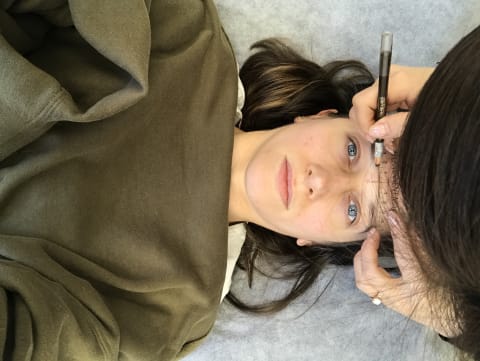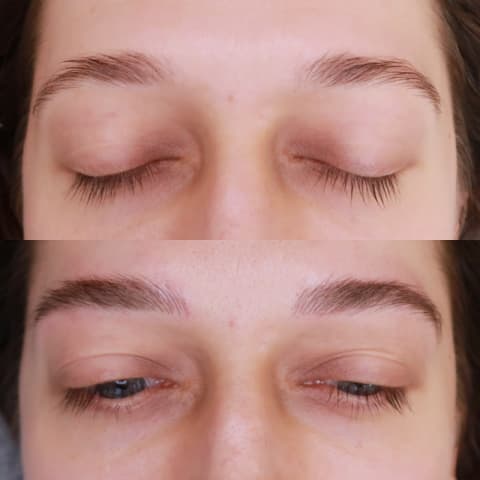When I saw an acquaintance go to get her eyebrows “micropigmented,” I raised a brow (sorry, not sorry). This is a sub-category of microblading that essentially requires making the equivalent of a paper cut in the skin to deposit semipermanent color for each hair, micropigmentation utilizes a single-needle tattooing machine to create fine, hairlike strokes. The result is softer and more natural than more traditional microblading marks and lasts for about a year—exactly what I was looking for. And while cost will vary based on what you get done and the place you go, expect to pay anywhere from $500 to $1,000 a session. As for brow care, you’re not supposed to sweat or get the brows wet for 48 hours after the procedure because doing so can remove the pigment. That means no face washing, no workouts, and no sauna. After that, be sure to keep them moisturized to prevent fading, much like you might a tattoo. Some clients need touch-ups three to 12 weeks after the procedure, but you can’t tell until the three- to five-week mark. First, we discussed the shape of my brows. They aren’t symmetrical (but no one’s are), and they slant downward, preventing the eyes from looking big and well-rested, she said. She wanted to bring them “up” for a more “awake” look. I wasn’t opposed to looking more awake, but I didn’t necessarily want my brows to look defined or even too close together. I was specifically worried about the spaces where my hairs are lacking—would the tattoos look too unnatural? Would they look too masculine or too feminine? I expressed these feelings to my brow specialist, and she understood. I shared that I wanted a cool to neutral ashy (read: not warm or reddish) color and my unusual request for “unkempt” and non-femme brows. Typically, brow professionals have a vision rooted in geometry, and she likes to stick to it. She drew what she thought would be best on my face, then I showed her how I drew my brows, and we talked it out. In the end, though, we left it open-ended—not the most comfortable place to be when someone is tattooing your face. But for some reason, I had faith. We decided to check in after the first “pass” and see whether I needed more strokes or a different color. For me, the numbing cream wore off more quickly than expected. With that, combined with the facial I’d had the day before and the fact that my skin is thin, the specialist said she wasn’t surprised I was feeling some sensation. Most online accounts I’ve read of microblading and micropigmentation claim painlessness because of the numbing cream, but I can’t lie to you. For about three-quarters of the time I was in process, it felt like I was getting a tattoo (I have two and know the feeling). I wasn’t in writhing pain, but it was uncomfortable. Mid-session (after the first pass) we reconvened and decided to go a shade darker. The entire tattooing process lasted about 20 minutes—it’s quick, and the pain endured for about half an hour after being finished. I say pain lightly; it was totally bearable and felt like a brief sunburn.




